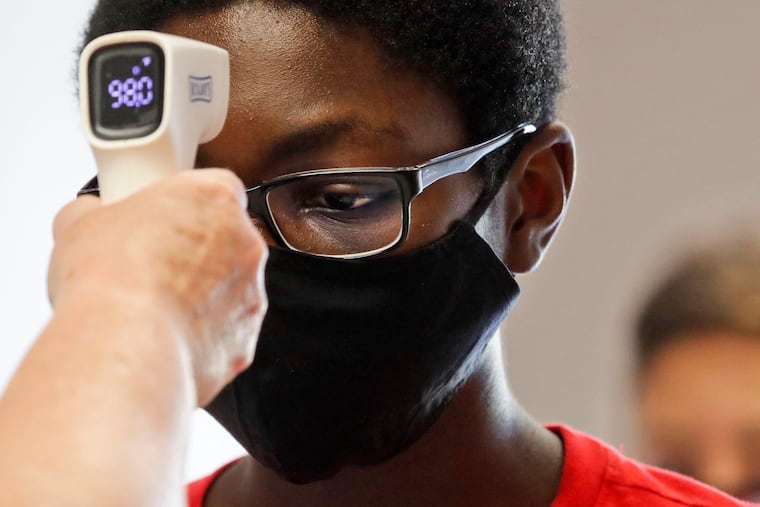Are temperature checks to screen for COVID-19 still worth doing?
Temperature checks may be barely helpful in the pandemic, but they can't hurt.

Everywhere from airports to Zumba classes, infrared thermometers have been embraced as an easy and cheap way to screen for COVID-19.
The devices — which are a little bigger than a glue gun — can measure a person’s temperature by being pointed at the forehead. No touching, no discomfort, no waiting for results.
But do they really work? Can temperature guns reliably detect COVID-19 so the infected person can quarantine?
The answer, as year two of the pandemic unfolds, is that checking temperatures is harmless, but the value is limited. Here’s why:
A normal abnormal temperature
Fever is a common COVID-19 symptom. But studies have found that a half to two-thirds of infected people have no symptoms, so their temperature won’t identify them.
What’s more, the “normal” body temperature standard of 98.6 Fahrenheit may be outdated. It comes from research published in 1868 by the German physician Carl Reinhold August Wunderlich. But Stanford University researchers determined that the body temperature of men born in the early to mid-1990s is on average 1.06 F lower than that of men born in the early 1800s. This may reflect improvements in public health, hygiene, and standards of living that have reduced the metabolic rate of modern humans, researchers speculated.
The implication is that temperature guns are aiming at a moving target.
“My wife’s normal temperature is 97, so when she has 98.6, she actually has a fever,” said Michael Cohen, president of the Institute for Safe Medication Practices in Horsham.
Infrared thermometers can also be thrown off by drafts, direct sun, radiant heat, hats, sweat, and incorrect positioning on the forehead, according to the Food and Drug Administration.
Uncertain accuracy
Some studies have found that, when properly used, the accuracy of infrared thermometers is on a par with digital thermometers. But overall, “evidence for the accuracy of infrared skin thermometers is equivocal,” concludes a review of the medical literature.
A COVID-19 screening study in Brazil — one of the few real-life studies — compared the use of infrared thermometer checks with a scratch-and-sniff test that assessed loss of smell, another COVID symptom.
“Our results suggest that temperature checking failed to detect COVID-19 infection, while an olfactory test may be useful,” researchers concluded.
On the upside, a thermometer gun is completely safe, contrary to false stories on social media that claim the device exposes the brain’s pineal gland to harmful radiation. In fact, the thermometer doesn’t emit radiation, but rather uses a detector called a thermopile to absorb infrared radiation coming from the person and turn it into heat.
The bottom line, medical experts say, is that temperature checks can’t hurt, but they’re just one small weapon in the arsenal of pandemic precautions.
“While better than nothing, [temperature checks] do not replace other critical interventions like hand washing, 6-feet distancing, using a mask,” Stephen P. Juraschek, a physician at Beth Israel Deaconess Medical Center, told Huffpost.com.
“It can give people a sense of reassurance to have someone at the door scanning your head,” Harvard Medical School physician Abraar Karan told NPR. “But it’s not in any way guaranteeing your safety, and it’s not guaranteeing you’re not infectious.”